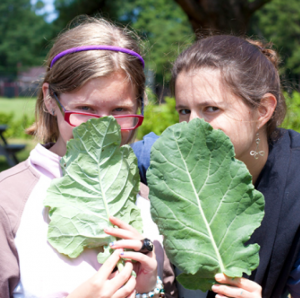September is National Childhood Obesity Awareness Month. It is intended to bring awareness to the public health crisis of childhood obesity: approximately one in six children in the US are obese. And according to the 2016 National Survey of Children’s Health (NSCH), 22% of youth in Vermont ages 10-17 are either overweight or obese. These youth are at increased risk for developing chronic health problems as adults such as heart disease, high blood pressure, asthma, bone or joint problems, and are more likely to be obese as adults — thus putting them at risk of further health issues such as various types of cancers.
Childhood obesity can be influenced by many factors — two of which are a lack of physical activity and insufficient sleep (according to the CDC). And in these days of tablets, smartphones, and social media applications that are intentionally designed to be addictive, it’s possible (and perhaps likely) for youth to lose out on both physical activity and quality sleep by spending too much time on their internet-connected devices.
Unsurprising to us, recent data show that participation in afterschool activities is a major way that youth in Vermont can both increase their physical activity levels and reduce their time spent in front of their addictive screens, thus decreasing their risk of obesity and its associated health problems. In the spring of 2017, about 20,000 high school students in Vermont answered questions about their levels of physical activity, screen time, and time spent participating in afterschool activities on Vermont’s Youth Risk Behavior Survey (YRBS). We correlated their responses on these items and found encouraging results.
Regarding screen time, students were asked about the amount of time per week they had recently “watched TV, played video or computer games, or used a computer for something that was not school work (counting time spent on things such as Xbox, PlayStation, an iPad or other tablet, a smartphone, texting, YouTube, Instagram, Facebook or other social media).” Eleven percent of students responded “less than one hour per day,” 36% responded “1 to 2 hours,” 34% responded “3 to 4 hours” and 19% responded “5+ hours.” A total of 19,918 high school students answered both this question and Vermont Afterschool’s question about the amount of time they spent participating “in afterschool activities such as sports, band, drama, or clubs run by school or community groups.” The correlated data show that as the amount of time spent participating in afterschool activities increased, the percentage of students who spent three or more hours per day using screens for reasons other than school work decreased.
Among students who did not participate in any afterschool activities, 62% spent three or more hours on their screens; among students who participated in 1-4 hours of afterschool activities per week, 53% spent three or more hours on their screens; among students who participated in 5-9 hours of afterschool activities per week, 47% spent three or more hours on their screens; and among students who participated in 10 or more hours of afterschool activities per week, 45% spent three or more hours on their screens.
The survey also asked students how many days in the most recent week that they were “physically active for least 60 minutes per day (by engaging in any kind of physical activity that increased their heart rate and made them breathe hard some of the time).” Thirteen percent of students responded “0 days;” 15% of students responded “1 to 2 days,” 23% of students responded “3 to 4 days,” 24% of students responded “5 to 6 days,” and 25% of students responded “7 days.” A total of 19,895 Vermont high schoolers responded to both this question and to the question relating to their weekly participation in afterschool activities.
As the number of hours of participation in afterschool activities increased, so did the percentage of students who reported that they were physically active for at least five days in the most recent week. Among students who did not report participating in any afterschool activities, 31% were physically active five days; among students who participated in 1-4 hours of afterschool activities, 42% were physically active five days; among students who participated in 5-9 hours of afterschool activities, 59% were physically active five days; and among students who participated in 10 or more hours of afterschool activities, 75% were physically active five days.
It is clear from these data that opportunities for students to participate in afterschool activities can help make a positive impact in fighting the obesity epidemic. When students have enriching experiences that allow them to be physically active and therefore have less time for “screen time,” it decreases their likelihood of experiencing the detrimental health outcomes related to obesity.

